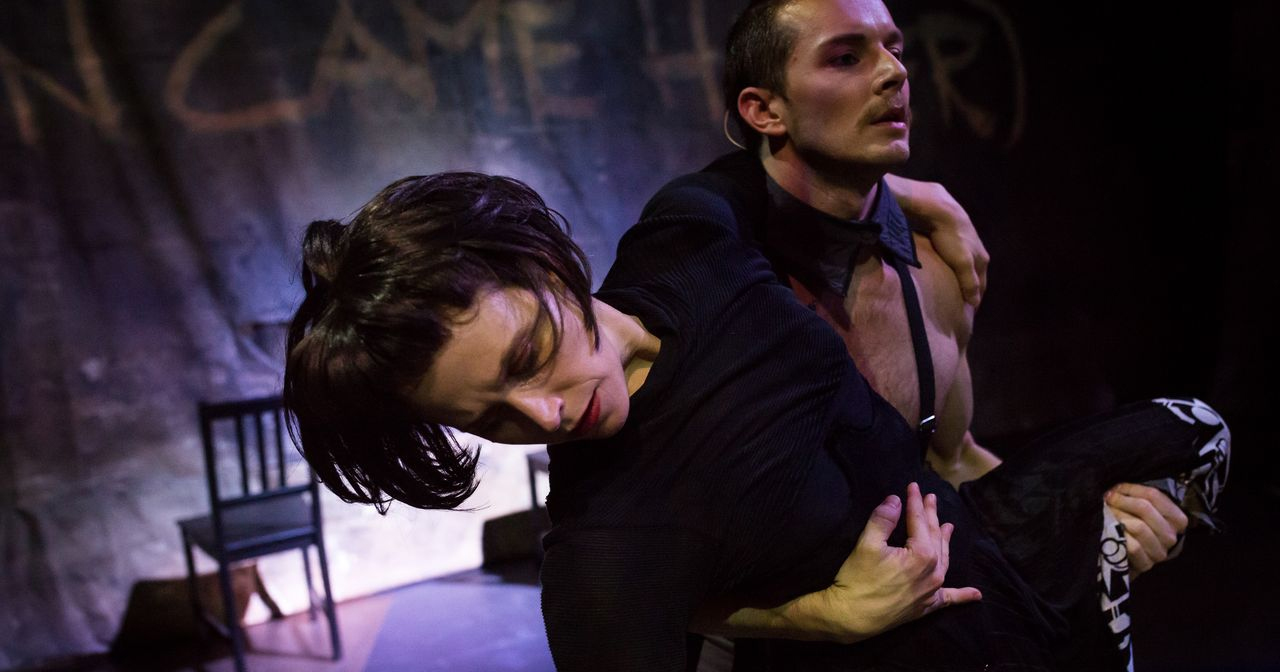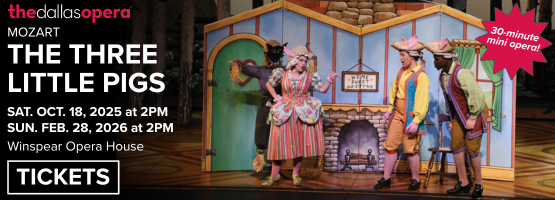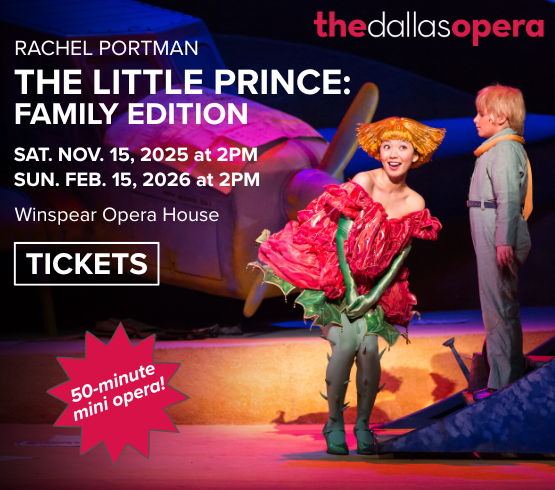When it comes to immersive performing arts no one in Houston, and perhaps all of Texas, is as bold as Houston’s Open Dance Project. Their commitment lies not just in producing a new major work with each season but in creating very different worlds with each project, from a trippy flashback into the turbulence of 1968 to a journey with Georgia O’Keeffe to the Texas panhandle. The only drawback to all those premieres is that we usually have but a few weeks to immerse ourselves in their creations before they disappear.
When I asked Arnoult why she chose these three pieces, she said she wanted to show audiences the range of stories they’ve created.
“I want people to remember and experience that we are a company that lives in and brings to life very distinct worlds with incredibly different sensibilities and super distinct aesthetics.”
They’ll begin with Panopticon. Originally performed in 2019, Arnoult set the piece in a dystopian future. It looked like nothing they did before in Houston and nothing they created after.
“Panopticon is just sterile and metal and plastic and clean,” describes Arnoult, noting what an aesthetic difference the vibrant colors of Dada Gert will be when they bring it back in the fall of 2025.
Inspired by the life and dances of pioneering Jewish dancer, performance artist and film star Valeska Gert in Weimar-era Germany, the piece remains very personal to Arnoult.
For the last show, they’ll remain in the early 20th century but move from Dada Berlin closer to home.
“Bonnie & Clyde is very clearly Texas. It feels very homegrown and close.” In fact, during the extensive research she does for all her immersive shows she found records of her great grandfather who was involved in the Texas prison system.
Arnoult says all three do have some commonalities and somewhat of a political overlap, but political in the sense of humans as “political creatures.”
Like Valeska Gert, Arnoult both choreographs and dances, but how much she performs in each piece depends on what a story requires and how she accesses the material. She will have the most presence in Dada Gert, where each character is modeled after different Gert solos/personas, with Arnoult taking on one of the primary roles, Hexe, the narrating witch. Arnoult found Dada Gert so personal that she had to perform it on her own body.
“That is genuinely why I made that piece: Because I wanted to embody it and I wanted to live in that world and see what happens when we bring all these solos to life next to each other.”
She will not perform in Bonnie & Clyde because while very engaged intellectually with the story and time period, she didn’t necessarily need to dance within the show.
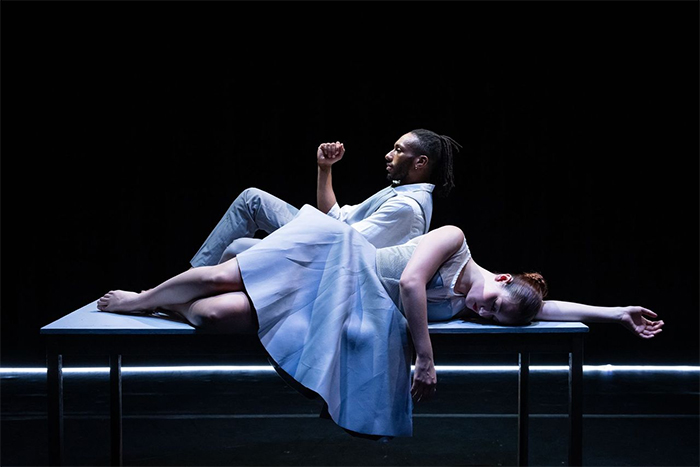
1 ⁄4
Brenden Winkfield and Madelyn Manlove in Open Dance Project’s Panopticon. Photo by Lynn Lane.
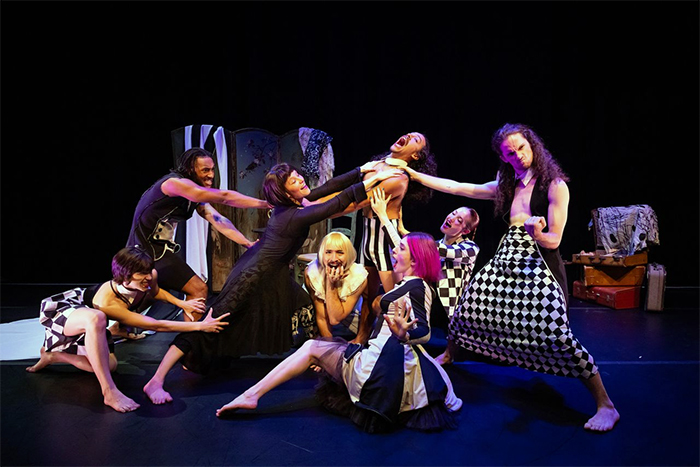
2⁄4
Open Dance Project in DADA GERT. Photo by Lynn Lane.
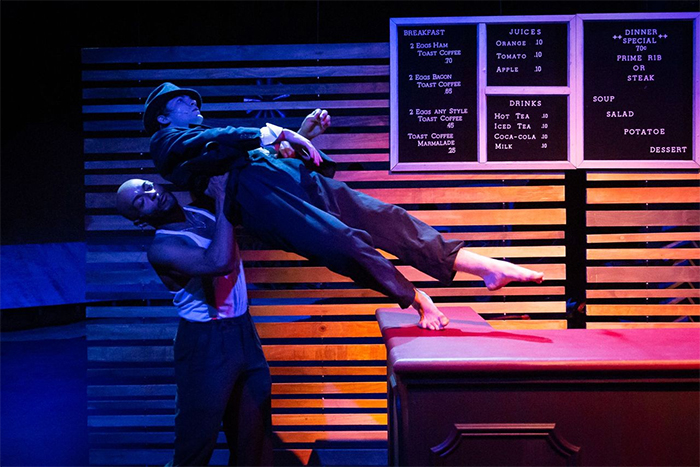
3 ⁄4
Joseph Stevens and Atticus Griffin in Open Dance Project’s Bonnie & Clyde. Photo by Lynn Lane.
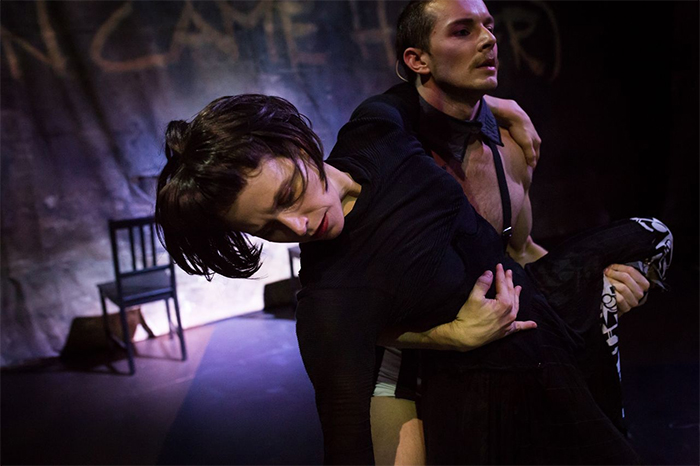
4 ⁄4
Annie Arnoult and Davis Stumberg in Open Dance Project’s DADA GERT at The Moody Center for the Arts in May 2018. Photo by Lynn Lane.
In fact, she had to stand outside the piece at times, watching her dancers to figure it all out. Panopticon takes that concept of choreographer as watcher and makes it explicit, with Arnoult present, but only as an all-seeing Big Brother on screens throughout the Panopticon set.
“Panopticon is about surveillance, technology, the policing camera, and the sort of imperial, oppressive eye. So it felt really natural what I was doing. The act of choreographing is policing what’s actually happening there.”
Those who experienced any of these shows before should not expect an exact replication.
“I can’t return to something and not mess with it again,” she explains. “I think it’s part of why I’m excited about this 10th anniversary. I’m curious how these pieces will live when they’re embodied by different ensemble members.”
And of course how each new, individual audience member moves within these worlds influences the way the dancers move. This is one of the reasons Arnoult loves to create immersive shows.
“I think it’s way more intimate,” she says of the relationship between dancers and audiences. “We are thinking about the audience and how they are going to interact and move inside of a piece the entire time we’re building it. The audience member has the ability to come close and see the details in the movement, hear the whispered text, and sit on the bench that I am moving on and under and around. We practice seeing and relating, having direct eye contact, potentially holding our hand out to allow them to touch and follow us.”
Arnoult believes that proximity requires dancers to be real in the moment.
“What I’m really trying in our immersive work is to not be symbolic, but to be very physically present in our own bodies and in the real emotions.”
“I really do feel like we’re growing up,” says Arnoult, though adding that she felt supported from day one. Yet since building back after the pandemic, she believes the community is seeing their own power and possibility.
“I’ve been so excited, these last couple years, by all of the conversations we’re having with the cultural arts districts, and the kind of interdisciplinary conversations that we’re having about the professionalism of the arts in Houston, really owning Houston as a cultural capital, recognizing the potential that we have to not just be a local art scene but to say: we are this hugely international community. We are incredibly vibrant. We’re gigantic.”
She also sees immersive art forms finding a bigger place in the Houston art landscape. Citing Houston’s Meow Wolf—where ODP performed for the opening—as an example of commercial immersive arts, she says Houston audiences and viewers are much more ready for these experiences.
“There are people out there hungry to be engaged in new ways. People are engaging with interactive digital media every single day. They are putting on their headsets and walking through these unique experiences. Suddenly our immersive dance theater doesn’t feel as foreign as it might have 10 years ago.”
—TARRA GAINES

